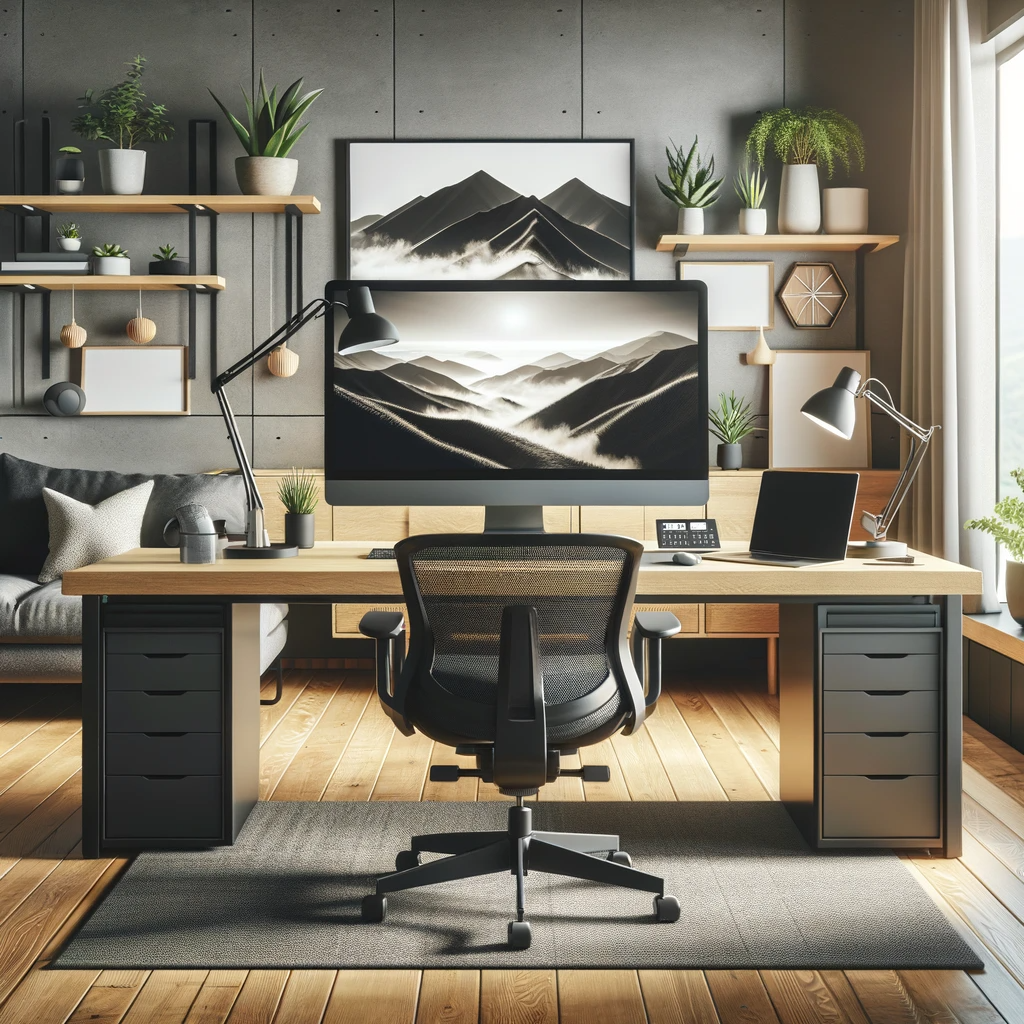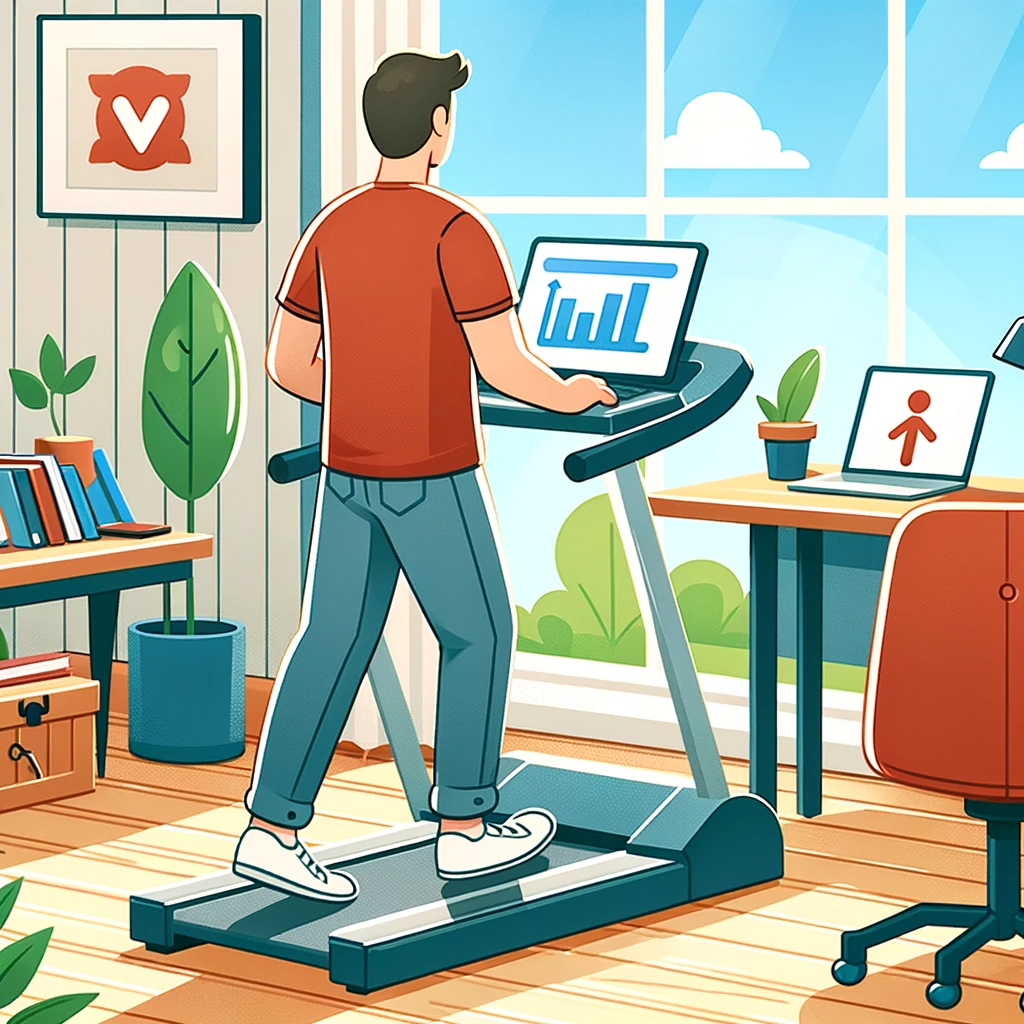The Ideal Home Office: A Remote Worker's Guide to Finding Your Space

Are you ready to elevate your remote work experience by setting up “the ideal home office: a remote worker’s guide to finding your space”? As remote work continues to grow in popularity, creating a functional and comfortable workspace that caters to your needs is essential. In this guide, we’ll walk you through the steps to design the perfect home office, focusing on location, ergonomics, and technology. Get ready to transform your workspace and boost your productivity!
Key Takeaways
- Create an efficient workspace with ergonomics, technology and location that inspires creativity and motivation.
- Assess needs & preferences for a tailored workspace to enable productivity during remote work.
- Establish boundaries, routine schedules & self care habits to ensure job satisfaction & healthy lifestyle while working remotely.
Creating the Perfect Home Office Space

Maintaining productivity, organization, and a balanced work-life as a remote worker requires a well-designed home office. To create an efficient workspace, consider factors like location, ergonomics, and technology. Remember, your home office should not only be functional but also inspire creativity and motivation.
Now, it’s time to embark on the journey of setting up the perfect home office space!
Assessing Your Needs and Preferences
Before diving headfirst into creating your home office, take a moment to assess your personal needs and preferences. Consider the following questions:
- What kind of equipment will you require?
- How much storage space will you need?
- What are your ergonomic requirements to maintain comfort and prevent physical strain?
Evaluating your needs better equips you to design a home office that meets your specific requirements and preferences.
Remember, a tailored workspace is key to staying focused and productive during your remote work journey.
Finding the Ideal Location
The location of your home office plays a critical role in fostering a comfortable and productive environment. When choosing a location, consider factors like:
- Privacy
- Accessibility
- Natural light
- Noise levels
Ideally, your home office should be situated in a quiet area away from distractions, with easy access to necessary amenities.
Additionally, try to incorporate natural lighting into your workspace, as it has been proven to enhance mood and overall well-being. Taking these elements into account moves you one step closer to establishing your ideal home office.
Essential Furniture and Equipment for Remote Work

A comfortable and efficient workspace for remote work hinges on investing in essential furniture and equipment. Prioritize ergonomics, functionality, and reliability when selecting items like:
- Chairs
- Desks
- Computers
- Peripherals
Equipping your home office with the right furniture and tools makes your workspace not only comfortable, but also conducive to productivity and less prone to causing physical strain.
Ergonomic Chair: Comfort and Support
An ergonomic chair is a must-have for any home office setup. Designed to provide comfort and support, a good ergonomic chair will help maintain proper posture and prevent strain during long work hours. Look for a chair with adjustable features, lumbar support, and a design that encourages correct alignment. Your chair should allow your knees to bend at a 90-degree angle and your feet to rest flat on the floor.
Investing in a quality ergonomic chair represents a significant step toward establishing a comfortable and healthy work environment.
Desk: Choosing the Right Type and Size
The right type and size of desk is a vital component of a functional home office workspace. Consider factors like available space, storage needs, and preferred working positions when choosing a desk. If you have limited space, opt for a compact or foldable desk. For those with more room, an L-shaped or executive desk might be a suitable option.
Additionally, consider using a standing desk or a height-adjustable desk to alternate between sitting and standing positions, promoting better posture and overall health.
Technology and Tools: Computers, Peripherals, and Connectivity
Ensuring seamless remote work involves equipping your home office with reliable technology and tools. A reliable computer, peripherals, and a stable internet connection are indispensable for a productive home office.
Consider investing in a high-quality monitor, ergonomic keyboard and mouse, and a reliable internet connection to stay connected and maintain focus during work hours. With the right technology and tools at your disposal, you’ll be well-equipped to tackle any remote work challenges that come your way.
Optimizing Your Workspace for Productivity

A productive home office entails more than just selecting the right furniture and equipment. Lighting solutions and organizational systems also play a crucial role in optimizing your workspace. A well-lit and organized environment enables you to maintain focus, minimize distractions, and boost your overall productivity.
Lighting Solutions: Balancing Natural and Artificial Light
A well-lit workspace is essential for maintaining focus and preventing eye strain during long work hours. Strive to balance natural and artificial light sources in your home office to create a comfortable and productive atmosphere. Make the most of natural light by positioning your desk near a window, and supplement with task lighting or ambient lighting when necessary.
Careful consideration of lighting solutions leads to a workspace that enhances focus and well-being.
Organizational Systems: Physical and Digital
Maintaining focus and productivity necessitates a clutter-free workspace. Implement physical and digital organizational systems to keep your home office neat and tidy. Storage solutions such as file cabinets, bookshelves and storage bins can help to organize paperwork and supplies. It also helps with knowing where everything is so it’s easier to access when needed..
Additionally, take advantage of digital task management tools like project management software and cloud storage to manage tasks and maintain easy access to important files. Staying organized fosters an environment conducive to focus and efficiency.
Personalizing Your Home Office

An inspiring and comfortable workspace stems from personalizing your home office. By incorporating decor, accessories, and plants, you’ll create an environment that reflects your personality and promotes motivation.
It’s time to delve into some strategies for personalizing your home office space.
Decor and Accessories: Inspirational Elements
Incorporate inspirational elements like artwork, quotes, and personal items to enhance your mood and motivation while working. Displaying pieces that resonate with you can help create a more enjoyable and uplifting workspace.
Additionally, consider using colors and textures that inspire you and complement your home office design.
Plants and Greenery: Boosting Mood and Air Quality
Adding plants and greenery to your home office not only improves the aesthetic but also offers numerous benefits for your mental and physical well-being. Plants can purify the air, reduce stress levels, and even absorb background noise.
Choose low-maintenance plants like succulents, cacti, or air plants to add a touch of life to your workspace without demanding too much attention.
Establishing Boundaries and Routines

For remote workers, a healthy work-life balance is vital. By establishing boundaries and routines, you’ll be better equipped to manage your time effectively and prevent burnout.
It’s time to delve into some strategies for achieving a balanced remote work lifestyle.
Work Schedules and Breaks
A consistent work schedule is paramount to maintain productivity and stave off burnout. Allocate specific work hours and designate time for breaks throughout the day. Regular breaks can help reduce stress, enhance focus, and increase productivity.
Sticking to a structured work schedule facilitates effective time management and promotes a healthy work-life balance.
Communication and Collaboration with Colleagues

Maintaining strong professional relationships while working remotely necessitates effective communication and collaboration with colleagues. Utilize digital tools and platforms to stay connected with your team and ensure smooth collaboration on projects.
Regular check-ins, virtual meetings, and clear communication channels can help foster a sense of connection and camaraderie among remote workers.
Health and Well-Being for Remote Workers

For remote workers, prioritizing health and well-being is vital as it directly impacts productivity and overall job satisfaction. By focusing on ergonomic practices and mental health, you’ll be taking important steps toward maintaining a healthy remote work lifestyle.
Ergonomic Practices and Posture
Implementing ergonomic practices and maintaining proper posture while working can help prevent strain and discomfort. Adjust your chair and desk for optimal ergonomics, ensuring your body is in a neutral position and your monitor is at eye level.
Additionally, consider using a standing desk or an adjustable desk to alternate between sitting and standing positions throughout the day.
Mental Health: Managing Stress and Burnout
A healthy remote work lifestyle hinges on managing stress and preventing burnout. Incorporate self-care practices, socialize with friends and family, and engage in hobbies outside of work hours to help reduce stress and maintain a positive outlook in your personal life.
Prioritizing mental health better prepares you to tackle the challenges of remote work and maintain a healthy work-life balance.
Continuous Improvement and Adaptation

View your home office setup as an ongoing project, where continuous improvement and adaptation are paramount to maintaining a workspace tailored to your needs and preferences. Regularly assessing your home office and making necessary changes enables the maintenance of a productive and comfortable workspace that evolves with your work requirements.
Assessing and Upgrading Equipment
Regularly assess and upgrade your home office equipment to ensure optimal functionality and comfort. Evaluate your computer, peripherals, and internet connection to determine if any upgrades or improvements are required. Staying proactive in maintaining your equipment ensures your home office setup continues functioning smoothly and efficiently.
Adapting to Changing Work Requirements
As your work requirements change, it’s important to adapt your home office setup accordingly. Seek feedback from colleagues and family members to identify areas for improvement and make necessary adjustments.
An openness to change and continuous refinement of your home office better prepares you to tackle the challenges of remote work and maintain a high level of productivity.
Summary
In conclusion, setting up the ideal home office is an essential step in maximizing productivity, maintaining a healthy work-life balance, and ensuring overall well-being while working remotely. By carefully considering factors like location, ergonomics, technology, and personalization, you’ll be able to create a workspace that caters to your specific needs and preferences. So, take the time to invest in your home office setup and transform your remote work experience into a truly enjoyable and fulfilling journey.
A real estate agent plays a crucial role in finding a home that accommodates the perfect office workspace. Their expertise in understanding client needs and local market trends is invaluable. First, they carefully listen to your specific requirements for an office space, whether it's natural light, tranquility, or proximity to other parts of the house. Then, leveraging their extensive network and knowledge of available properties, they identify homes that match your criteria. They consider factors like room size, layout, and potential for customization to ensure the space can be tailored to your professional needs. Furthermore, an agent provides insights into the neighborhood's amenities, such as internet connectivity and proximity to essential services, which are vital for a functional home office. Throughout the process, they offer guidance on negotiating the best deal, ensuring that your new home not only meets your living needs but also provides an ideal environment for your professional success. If you're looking for your next home in Fergus, and a home office is at the top of your list. Don't hesitate to reach out to Kris Butler to help you in your search!
Frequently Asked Questions
How do I make the perfect home office space?
To make the perfect home office space, invest in a comfortable chair, use a second monitor, consider a standing desk, add some green plants and ambient lights, keep equipment for brainstorming, and add personal touches to your decor. Additionally, select the best location, add privacy, prioritize comfort and ergonomics, get the right desk, stash away distractions, and use smart storage solutions.
What are some essential items for a home office setup?
Essential items for a home office setup include an ergonomic chair, suitable desk, reliable computer, peripherals, and stable internet connection.
How can I optimize my home office for productivity?
Optimize your home office for productivity by balancing natural and artificial light sources, implementing organizational systems, and creating a comfortable and inspiring space.
How can I maintain a healthy work-life balance while working remotely?
Create clear boundaries, establish a consistent work schedule, and allocate time for breaks and self-care to maintain a healthy work-life balance while working remotely.
What are some ways to personalize my home office?
Personalize your home office by adding artwork, quotes, and personal items as well as plants and greenery to create an inspiring atmosphere.
Kris Butler - Fergus Real Estate Agent


